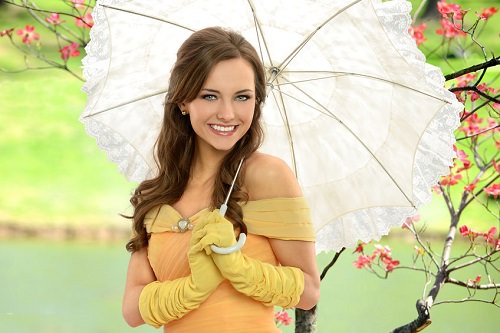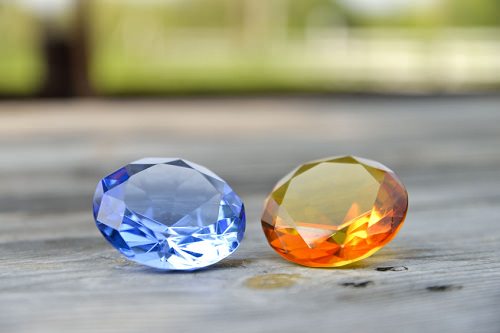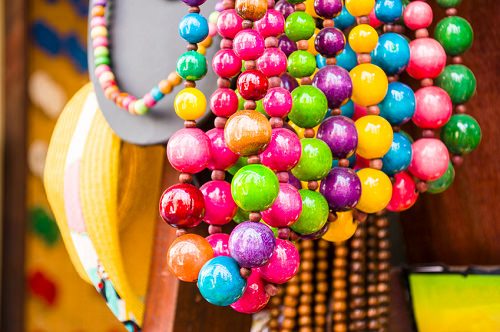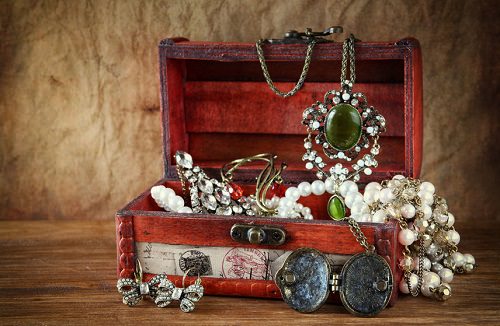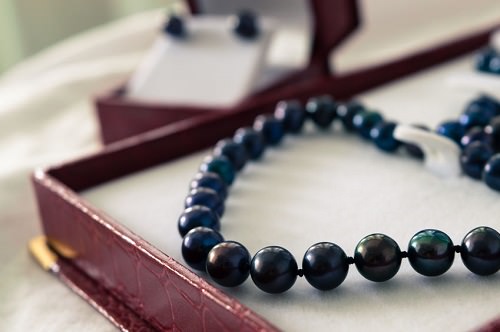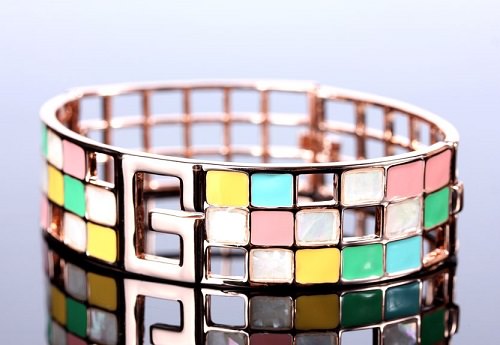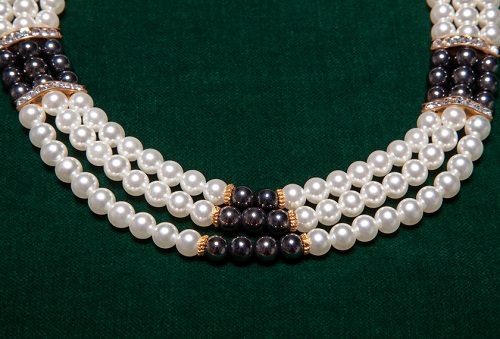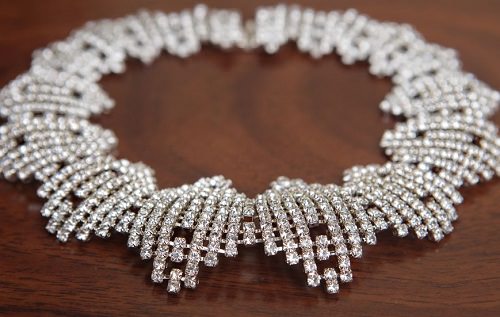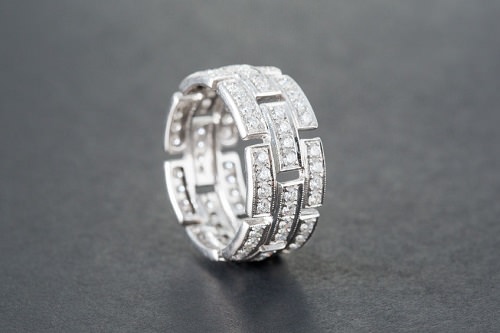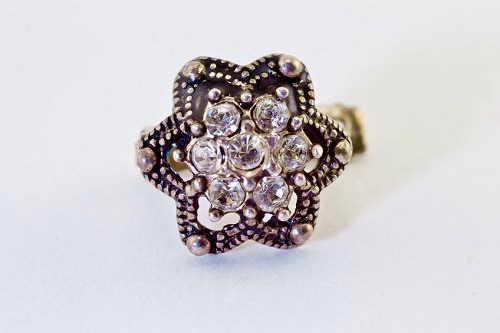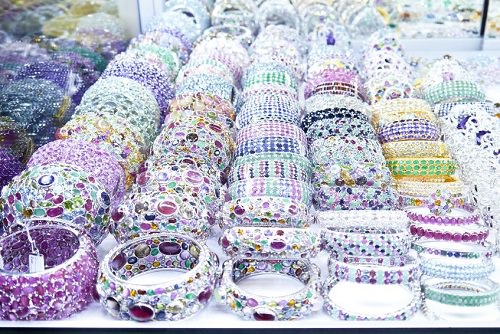While jewellery styles and trends can change from decade to decade, the nineteenth and twentieth centuries definitely ushered in many new styles, jewel-making techniques, and materials into the world of jewellery. The following are some of the most dramatic ways that jewellery changed during these two recent centuries.
1. Precision Faceting
Faceted gems first began to appear during the early Renaissance; however, facets were rudimentary at best. By the early twentieth century, new techniques and tools allowed for better facets so gems began to sparkle more brightly than ever. With the invention of laser faceting, more intricate cuts could be made on the gem to allow for the captivating brilliance that we see in modern gems today.
2. Welcome Plastic
Plastic jewellery in the form of celluloid became popular during the Victorian era of the nineteenth century. By the 1930s, of course, Bakelite jewellery – a type of hard plastic jewellery – became all the rage and continues to be highly collectible today. Bakelite jewellery allowed more women to wear jewels during eras like the Great Depression. These jewels tended to be colorful as well as less expensive than jewels crafted with gems and precious metals.
3. The Jewel Masters
The nineteenth century was a celebration of the jewel makers. Various jewellery artisans of this period achieved world-wide acclaim as masters in a way that artisans of earlier eras did not. Jewellery designers and crafters like Carl Faberge, Louis Comfort Tiffany, and Rene Lalique dramatically altered the look of jewellery by infusing pieces with their own creative stamp. Their jewellery from the nineteenth and early twentieth centuries is regarded as some of the most innovative and beautiful jewellery in the world.
4. Queenly Appeal
Few queens had as profound an effect on jewellery styles as Queen Victoria. Her wearing of jet jewellery, for instance, as a sign of her mourning helped promote an entire jet industry that reached its zenith in England during her reign. In fact, Victorian jewellery owes much to this queen who made so many designs of the era the most fashionable baubles a stylish woman could wear.
5. Enameled Beauty
Various enameling techniques were heavily relied upon by jewel crafters of the nineteenth and twentieth centuries. Enameled jewellery brought far more color into jewels and also allowed for more variety to be seen in jewel designs. The Victorians adored floral motifs as well as animal motifs when it came to enameled jewellery.
6. Pearl Culture
Before the nineteenth century, pearls were even more highly regarded than they are today. Large and perfectly-shaped pearls were rare and expensive finds. In the early twentieth century, however, techniques were developed that allowed for pearl culture. Essentially, a Japanese biologist learned how to employ a grafting needle to force an oyster to produce an exquisite pearl. This discovery launched the cultured pearl industry allowing many women – not simply countesses and queens – to own a rope of pearls.
Read also – 10 Most Beautiful Ways to Wear Pearls
7. The Diamond Engagement
Although scholars believe the first diamond engagement ring was given during the early Renaissance in Venice, the practice didn’t catch on until the Victorian era. With the discovery of new diamond mines in Africa during the nineteenth century, diamonds, though expensive, became more accessible for people. This accessibility coupled with the gems’ beauty helped make diamonds the most popular gemstones for betrothal.
8. The Gleam of Platinum
More rare and even pricier than gold, platinum is a precious metal that was used to fashion jewellery during the Edwardian period of the early twentieth century. Platinum is hard and lustrous. It’s perfect for use in jewellery design. However, its scarcity makes it more expensive than silver or gold in jewels even today.
9. Geometric and Abstract Styles
The Art Deco period in jewellery took many design queues from modern art. Art Deco jewels were often designed in abstract or purely geometrical shapes. For this reason, jewellery of the 1920s and 1930s remains easily identifiable. Designers took pleasure in creating jewels as works of art, and the design often took precedence over the featured gems themselves.
10. Rhinestones and Other Faux Elements
During and after the Great Depression, few people had money to spend on expensive gems and precious metals, so savvy designers turned to more affordable materials like glass and base metals to create jewellery that any women could wear. Rhinestone jewellery and other costume jewels became popular in the 1930s, and this type of fashion jewellery remains still popular.
Read also – 10 Gemstones to Add to Your Jewellery Collection
The nineteenth and twentieth centuries were amazing times for jewellery. Jewels from these centuries remain uniquely collectible and continue to be revered for their modern sensibilities that make them so different from the jewels that came before. We rarely think about the history of jewellery, yet I think it’s crucial to know some facts that you could share with the others down the road. What facts do you know about jewellery during the other centuries?

